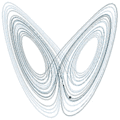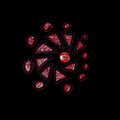Template:Selected anniversaries/October 13: Difference between revisions
No edit summary |
No edit summary |
||
| Line 10: | Line 10: | ||
||1689: George Ent dies ... scientist in the seventeenth century who focused on the study of anatomy. He was a member of the Royal Society and the Royal College of Physicians. Ent is best known for his associations with William Harvey, particularly his ''Apologia pro circulatione sanguinis'', a defense of Harvey’s work. Pic. | ||1689: George Ent dies ... scientist in the seventeenth century who focused on the study of anatomy. He was a member of the Royal Society and the Royal College of Physicians. Ent is best known for his associations with William Harvey, particularly his ''Apologia pro circulatione sanguinis'', a defense of Harvey’s work. Pic. | ||
||1710: Alban Butler born ... priest and hagiographer. Pic search | ||1710: Alban Butler born ... priest and hagiographer. Pic search. | ||
File:Nicolas Malebranche.jpg|link=Nicolas Malebranche (nonfiction)|1715: Priest and philosopher [[Nicolas Malebranche (nonfiction)|Nicolas Malebranche]] dies. He was instrumental in introducing and disseminating the work of [[René Descartes (nonfiction)|René Descartes]] and [[Gottfried Wilhelm Leibniz (nonfiction)|Gottfried Wilhelm Leibniz]] in France. | File:Nicolas Malebranche.jpg|link=Nicolas Malebranche (nonfiction)|1715: Priest and philosopher [[Nicolas Malebranche (nonfiction)|Nicolas Malebranche]] dies. He was instrumental in introducing and disseminating the work of [[René Descartes (nonfiction)|René Descartes]] and [[Gottfried Wilhelm Leibniz (nonfiction)|Gottfried Wilhelm Leibniz]] in France. | ||
| Line 44: | Line 44: | ||
|link=|1909: Grigori Tokaev born ... rocket scientist and long-standing critic of Stalin's USSR. Pic. | |link=|1909: Grigori Tokaev born ... rocket scientist and long-standing critic of Stalin's USSR. Pic. | ||
||1911: John William Wrench, Jr. born ... mathematician who worked primarily in numerical analysis. He was a pioneer in using computers for mathematical calculations, and is noted for work done with Daniel Shanks to calculate the mathematical constant pi to 100,000 decimal places. Pic search book cover | ||1911: John William Wrench, Jr. born ... mathematician who worked primarily in numerical analysis. He was a pioneer in using computers for mathematical calculations, and is noted for work done with Daniel Shanks to calculate the mathematical constant pi to 100,000 decimal places. Pic search book cover. | ||
||1913: Gyula Vályidies dies ... mathematician and theoretical physicist, a member of the Hungarian Academy of Sciences, known for his work on mathematical analysis, geometry, and number theory. Pic. | ||1913: Gyula Vályidies dies ... mathematician and theoretical physicist, a member of the Hungarian Academy of Sciences, known for his work on mathematical analysis, geometry, and number theory. Pic. | ||
||1918: Marcel Deprez dies ... electrical engineer. Pic. | ||1918: Marcel Deprez dies ... electrical engineer. Pic. | ||
||1926: Astrophysicist and author Jacques Emile Blamont born. Blamont will found and lead the ''Centre national d'études spatiales'' (CNES). Pic. | |||
||1938: E. C. Segar dies ... cartoonist, created Popeye. Pic. | ||1938: E. C. Segar dies ... cartoonist, created Popeye. Pic. | ||
| Line 54: | Line 56: | ||
||1941: David Devant dies ... magician, shadowgraphist and film exhibitor. He is regarded by magicians as a consummate exponent of suave and witty presentation of stage illusion. Pic. | ||1941: David Devant dies ... magician, shadowgraphist and film exhibitor. He is regarded by magicians as a consummate exponent of suave and witty presentation of stage illusion. Pic. | ||
||1963: Alan Arnold Griffith dies ... engineer. Among many other contributions he is best known for his work on stress and fracture in metals that is now known as metal fatigue, as well as being one of the first to develop a strong theoretical basis for the jet engine. Pic search | ||1963: Alan Arnold Griffith dies ... engineer. Among many other contributions he is best known for his work on stress and fracture in metals that is now known as metal fatigue, as well as being one of the first to develop a strong theoretical basis for the jet engine. Pic search. | ||
||1976: The first electron micrograph of an Ebola viral particle is obtained by Dr. F. A. Murphy, now at U.C. Davis, who was then working at the C.D.C. | ||1976: The first electron micrograph of an Ebola viral particle is obtained by Dr. F. A. Murphy, now at U.C. Davis, who was then working at the C.D.C. | ||
Revision as of 17:53, 15 April 2020
1597: Astronomer Johannes Kepler replied to Galileo's letter of 4 August, 1597, urging him to be bold and proceed openly in his advocacy of Copernicanism.
1687: Astronomer, lens-maker, and academic Geminiano Montanari dies. He made the observation that Algol in the constellation of Perseus varies in brightness.
1715: Priest and philosopher Nicolas Malebranche dies. He was instrumental in introducing and disseminating the work of René Descartes and Gottfried Wilhelm Leibniz in France.
1729: Leonhard Euler mentions the gamma function in a letter to Christian Goldbach. Adrien-Marie Legendre gave the function its symbol and name in 1826.
1772: Using the San Pietro scrying engine, astronomer Charles Messier previews his discovery of a "galactic whirlpool" with a temporal accuracy of "within a year".
1773: The Whirlpool Galaxy is discovered by Charles Messier.
1774: The Custodian prevents the Whirlpool Galaxy Gang from committing crimes against astronomical constants, citing the gang's "expired transdimensional corporate license."
1890: Mathematician Georg Feigl born. He will work on the foundations of geometry and topology, studying fixed point theorems for n-dimensional manifolds. Feigl will be one of the initial authors of the Mathematisches Wörterbuch.
1987: Physicist and academic Walter Houser Brattain dies. He shared the Nobel Prize in Physics in 1956 "for research on semiconductors and the discovery of the transistor effect."
1989: Lorenz system develops self-awareness, experiences irrational fear of the number thirteen.
2018: Signed first edition of Red Spiral 2 used in high-energy literature experiment unexpectedly develops artificial intelligence.










